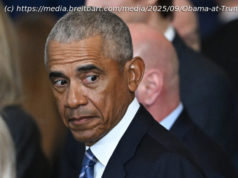The decision comes after years of study and debate over the building of a third runway at the airport, Europe’s busiest. But more challenges are expected.
LONDON — British lawmakers on Monday approved plans to expand Heathrow Airport near London after years of study and debate, but the construction of a third runway still faces significant hurdles.
Europe’s busiest airport, Heathrow operates at close to capacity, and supporters of the expansion have said that adding a third runway would keep Britain from losing ground to airline hubs in Continental Europe. But for critics, the plans are synonymous with bulldozed homes, more aircraft noise and poorer air quality for those living under congested flight paths west of London.
Those arguments have stalled the project for years.
The government, which wants to proceed with the expansion, won Monday’s 415-to-119 vote partly thanks to the support of some opposition Labour Party lawmakers, who broke ranks with their leadership.
But Monday’s decision is far from the final green light for the project, which is expected to cost 14 billion pounds, or about $18.5 million. Legal challenges are likely, and planning consultations will allow opponents to raise detailed objections. Some senior Labour politicians have threatened to scrap the expansion plans if their party gains power.
One politician likely to suffer from the political fallout of the vote is Foreign Secretary Boris Johnson, a former London mayor who once threatened to lie down in front of the bulldozers to prevent construction at Heathrow.
The pressure on Mr. Johnson to resign his cabinet post increased last week after another official, Greg Hands, quit as trade minister to vote against the Heathrow expansion.
By contrast, Mr. Johnson absented himself from Monday’s vote by traveling to Afghanistan, though for hours even cabinet colleagues were unsure of his whereabouts. A newspaper, The Evening Standard, quoted from a letter written by Mr. Johnson to politicians in his constituency in which he promised to continue opposing the runway but argued that “my resignation would have achieved absolutely nothing.”
Even some political allies seemed unimpressed.
“He’ll need to look his constituents in the eye and explain where he was on the night of the Heathrow vote,” Stephen Crabb, a Conservative lawmaker told the BBC.
At one point, the Conservative Party opposed any expansion of Heathrow, and Prime Minister Theresa May once argued against it. While he was London’s mayor, Mr. Johnson suggested building a new airport in the Thames Estuary east of London — nicknamed “Boris Island” — and using the land around Heathrow for housing.
The choice ultimately came down to expanding Heathrow or Gatwick Airport, which is south of London and significantly farther from the city.
Heathrow’s location has made it a particularly thorny issue for both main political parties: Its busy flight paths cross many residential districts, including the parliamentary constituencies of influential lawmakers.
But its evolution into one of the world’s busiest airports could not have been predicted in 1930, when an aircraft maker created a single grass runway on a 150-acre plot for assembly and testing. The land was requisitioned by the military during World War II but handed over as a civil airport in 1946. In the decades since then, London has transformed.
Home to more than 80 airlines, Heathrow connects the British capital to more than 200 destinations around the world. In 2017, the airport handled more than 78 million passengers on more than 474,000 flights, as well as nearly 1.9 million tons of cargo.
But while Heathrow’s traffic has grown, the airport’s rivals have taken advantage of their greater capacity: Schiphol in Amsterdam has six runways, and Charles de Gaulle in Paris and the Frankfurt airport each have four.
Other British airports, including Stansted, northeast of the city, have taken some of the strain in recent years, but all five of London’s airports could be operating at capacity by 2034, according to some estimates.
A review in 2015 recommended adding a new runway at Heathrow as the best option; advocates of expansion argue that, with Britain planning to leave the European Union next year, it has never been more important to improve air capacity to destinations outside Europe.
So, after years of equivocation, this month Mrs. May finally threw her personal support behind the Heathrow expansion plan.
Before the vote on Monday, John Holland-Kaye, the chief executive of Heathrow, said that an expansion “will connect all of Britain to global trade, increase competition and choice for passengers and create tens of thousands of new skilled jobs for future generations.” Len McCluskey, general secretary of the influential Unite trade union, echoed that message.
But while some of those living near the airport depend on it for their livelihoods, many others have campaigned against a project that threatens to destroy some settlements like Harmondsworth, a village that dates from medieval times.
“Local communities are clear that the costs of expansion at Heathrow, including as many as 700 more planes in the skies every single day, far outweigh any alleged benefits,” said Paul McGuinness, who leads the No 3rd Runway Coalition, a group opposed to expansion. Mr. McGuinness added that the project was “the costliest option considered by government, carries the largest financial and planning risk, and has the most significant and negative environmental impact.”
Many Londoners are plagued by aircraft noise, and critics of the Heathrow plan include Mayor Sadiq Khan, who supported a rival proposal to expand Gatwick.
“This will be a critical moment,” Mr. Khan said before Monday’s vote. “And for the sake of Londoners affected by poor air quality, disruption from noise and the costs needed to improve transport connections, I will do what I can to stop these poor plans.”





